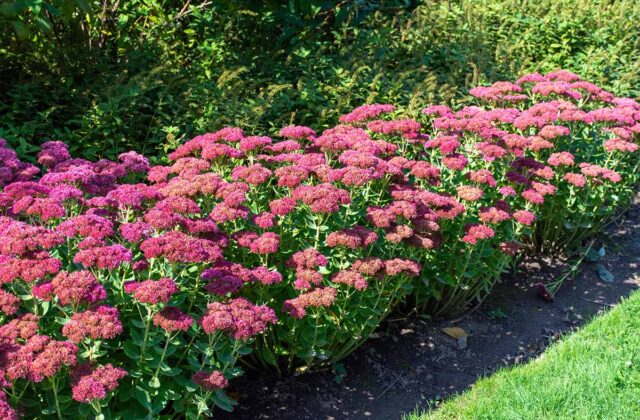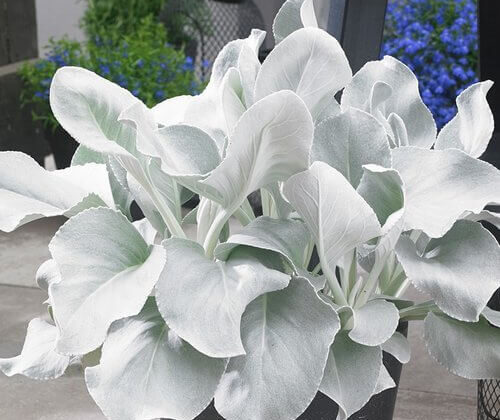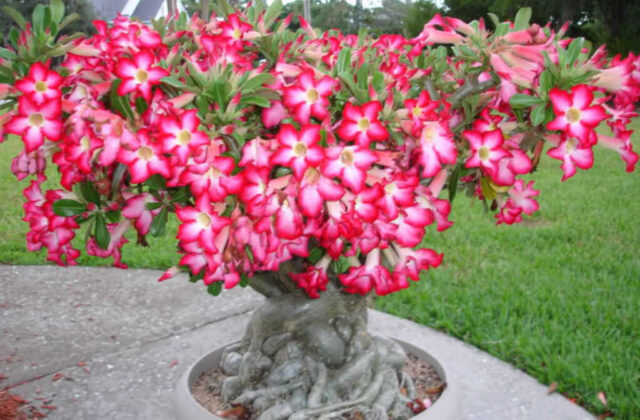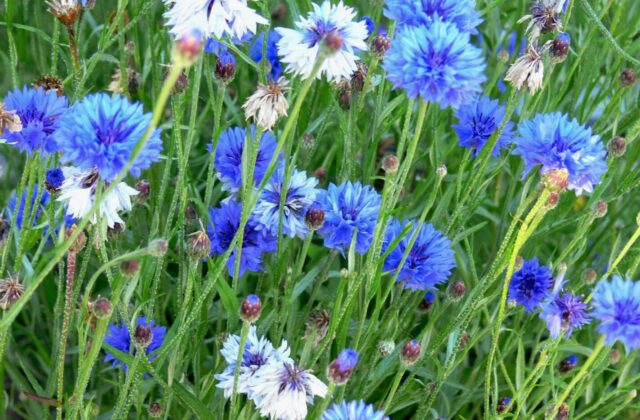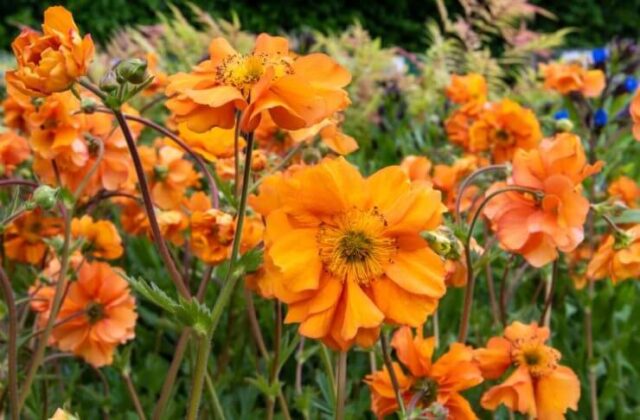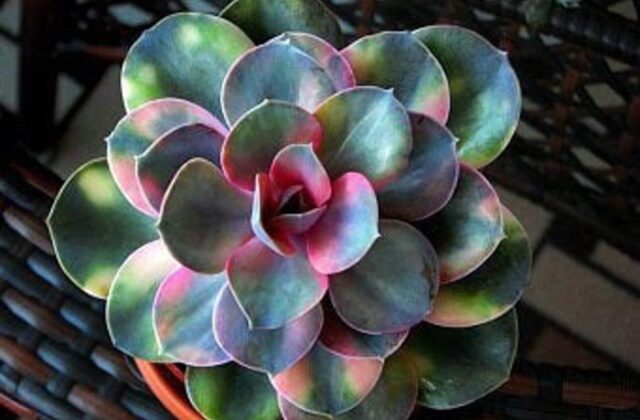How to Grow Wax Flower (Chamelaucium)
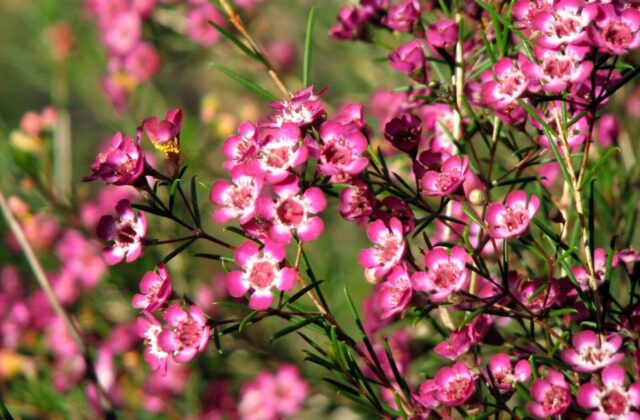
Introduction
Welcome to the ultimate guide on how to grow Wax Flower! Discover all you need to grow healthy and thriving plants – from their unique traits to expert maintenance and care – all in one convenient place. Wax flowers, scientifically known as Chamelaucium, are stunning evergreen shrubs native to Western Australia. Wax flowers are popular among gardeners and florists due to their aromatic foliage and elegant blooms. They are available in various colors and sizes. Join us as we explore the beauty and cultivation of these enchanting plants.
Understanding Wax Flower
Wax flowers are attractive evergreen shrubs native to Western Australia. They thrive in well-draining soil and require full sun to partial shade for optimal growth. The plants feature waxy, star-shaped flowers that bloom in various colors such as white, pink, and purple. The delightful fragrance of wax flowers makes them a popular choice for floral arrangements and gardens. Charming and versatile, they add elegance to gardens and floral displays.
The Characteristics and Natural Habitat of Wax Flower
Wax flowers exhibit remarkable drought tolerance, enabling them to withstand dry conditions once they root. Typically, they flourish in sandy or gravelly soils, mirroring their natural habitat where they frequently occur. Additionally, the small, needle-like leaves of wax flowers contribute to their dense and bushy appearance. Moreover, being charming and versatile, they elegantly enhance gardens and floral displays.
Different Varieties of Wax Flower and Their Features
Popular varieties of wax flowers bring diversity and beauty to any garden or floral arrangement. Furthermore, they are an excellent choice for gardeners seeking variety. They come in different growth habits, flower colors, and foliage textures, ensuring there is something suitable for everyone’s preferences. They are versatile and can be a delightful choice for any gardening enthusiast. Below are a few wax flower species and their characteristics:
| Type | Characteristics |
| Chamelaucium Axillare | Commonly known as the narrow-leaved wax flower. It is characterized by its slender foliage and clusters of small, waxy flowers that bloom along the stems. The flowers come in various colors, including shades of white, pink, and purple, adding a splash of vibrant hues to the garden landscape. |
| Chamelaucium Drummondii | Commonly referred to as Drummond’s wax flower. It is recognized for its compact growth habit and vibrant, waxy flowers. The blooms, typically found in shades of pink or purple, emerge in clusters along the plant’s stems, creating a striking visual display. |
| Chamelaucium Confertiflorum | Commonly known as dense-flowered wax flower. It is distinguished by its compact growth habit and profusion of small, waxy flowers. The blooms, typically appearing in shades of pink or purple, form dense clusters along the plant’s stems, creating a visually stunning effect. |
| Chamelaucium Pauciflorum | Commonly known as the few-flowered wax flower. It is characterized by its compact growth habit and sparse clusters of delicate, waxy flowers. These blooms, typically found in shades of pink or white, emerge sporadically along the plant’s stems, adding subtle yet elegant touches to the garden landscape. |
| Chamelaucium Megalopetalum | Commonly known as large-petaled wax flower. It is distinguished by its striking, oversized petals, which lend a unique and captivating appearance to its flowers. The blooms typically range in color from shades of pink to purple, with occasional variations. |
| Chamelaucium Ciliatum | Commonly known as the fringed wax flower. It is characterized by its distinctive fringed petals, which give its flowers an elegant and intricate appearance. Typically found in shades of pink or purple, these blooms add a touch of sophistication to the garden landscape. |
| Chamelaucium Marchantii | Commonly known as Maroon wax flower. It is renowned for its exquisite deep maroon flowers, which stand out with their rich color and delicate appearance. The blooms of Chamelaucium marchantii add a touch of elegance and sophistication to any garden or floral arrangement. |
| Chamelaucium Micranthum | Commonly known as small-flowered wax flower It is characterized by its dainty, petite flowers, which bloom in abundance along slender stems. Typically appearing in shades of pink or white, these blooms contribute delicate elegance to the garden landscape. |
| Chamelaucium Brevifolium | Commonly known as short-leaved wax flower. It is recognized for its compact growth habit and small, narrow leaves. The flowers of Chamelaucium brevifolium are typically small and delicate, appearing in clusters along the stems. They come in various colors, including shades of pink, white, and purple, adding a subtle yet charming touch to the garden landscape. |
| Chamelaucium Uncinatum | Commonly known as Geraldton wax flower. It is celebrated for its profusion of waxy flowers, which bloom in clusters along its slender stems. These blooms come in various colors, including shades of pink, white, and purple, adding vibrant splashes of color to the garden landscape |
| Chamelaucium Virgatum | Commonly known as the weeping wax flower. It is recognized for its graceful, weeping growth habit and clusters of small, waxy flowers. These blooms typically appear in shades of pink, white, or purple, adding delicate beauty to the garden landscape. |
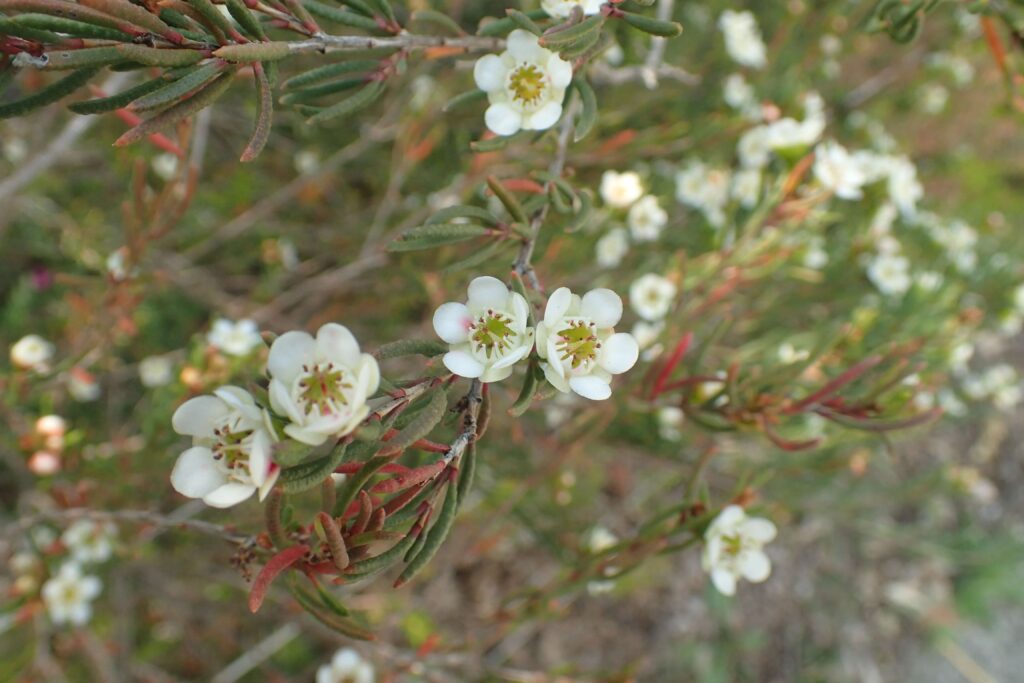
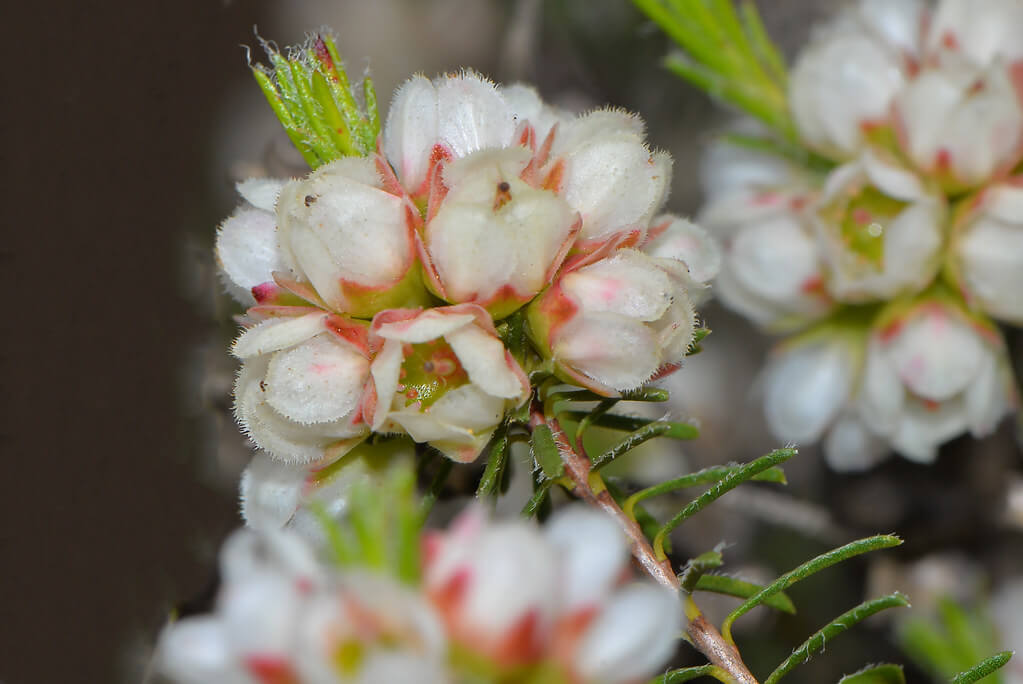
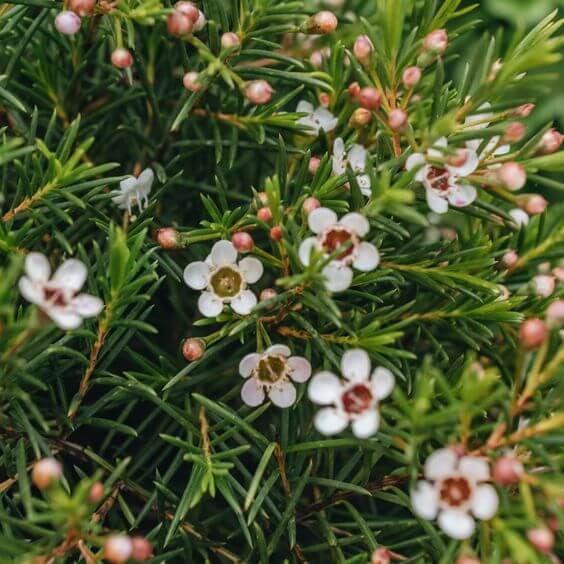
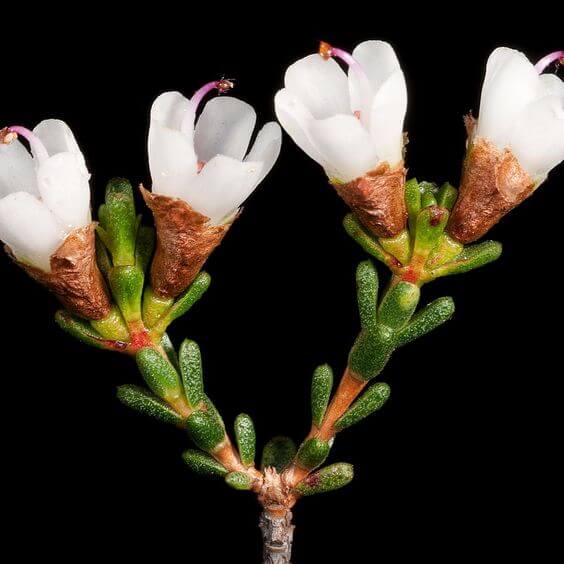
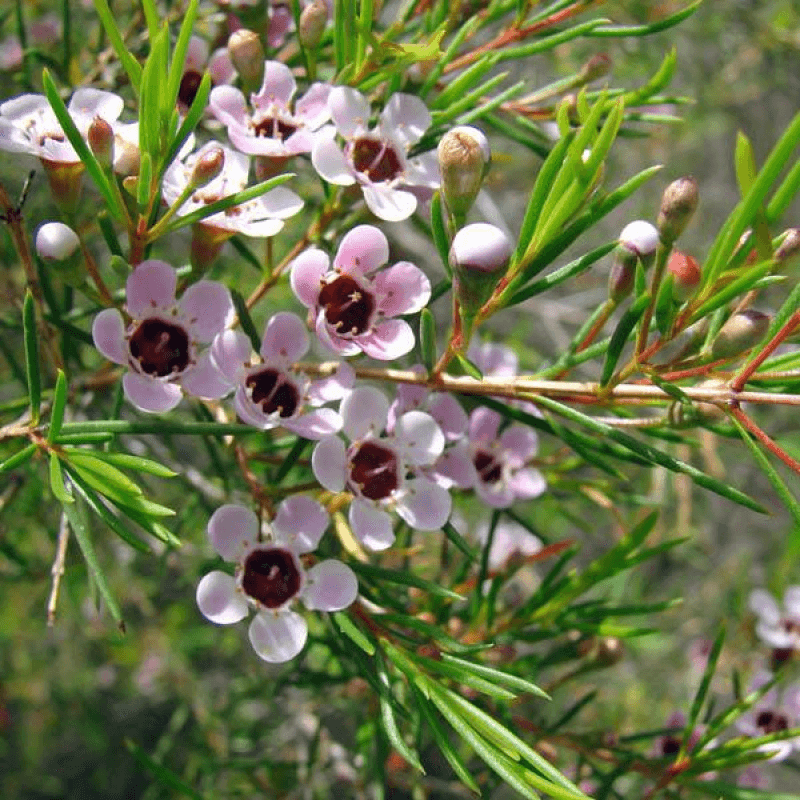
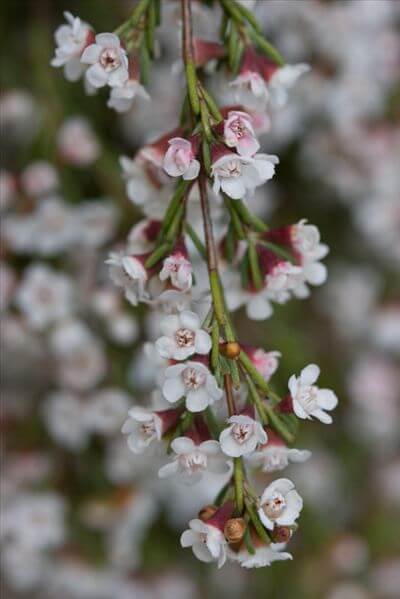
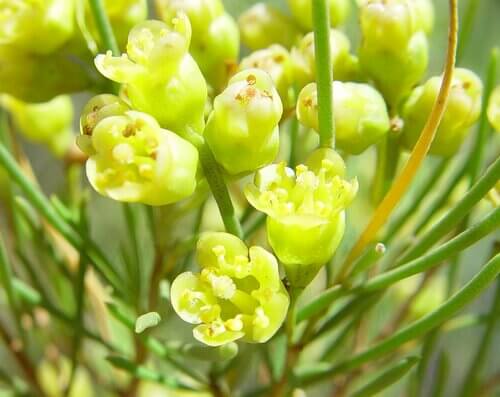
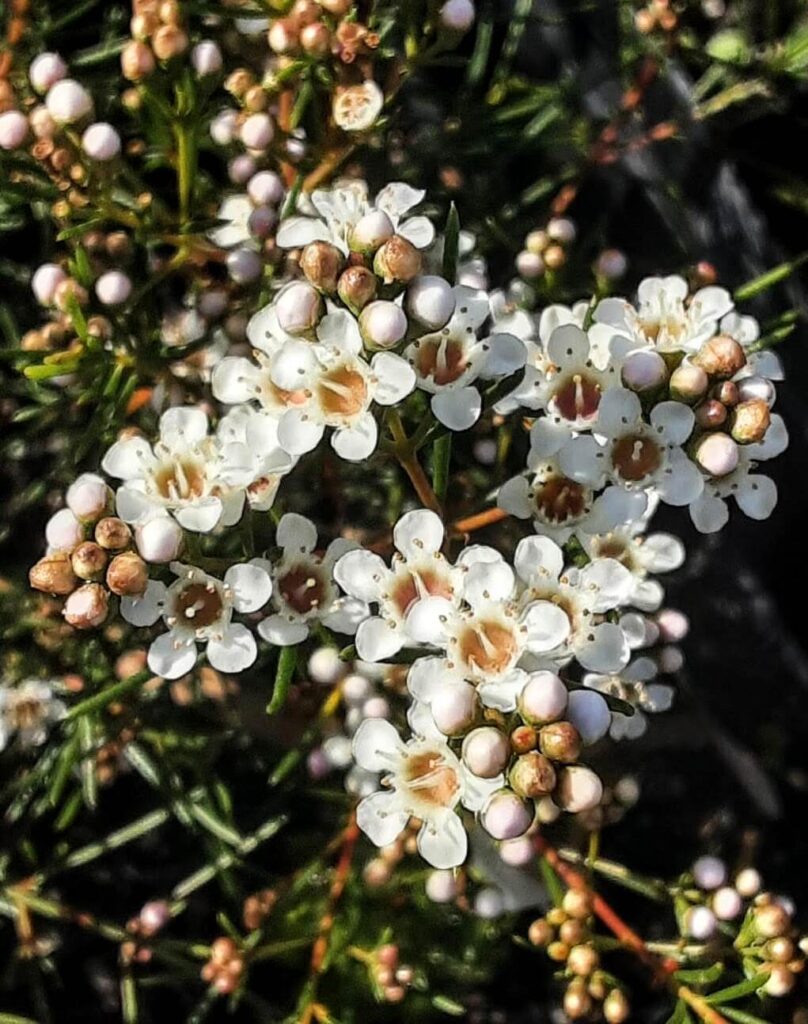
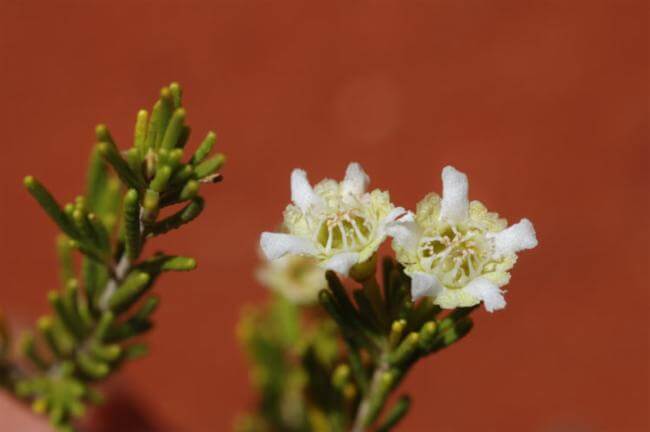
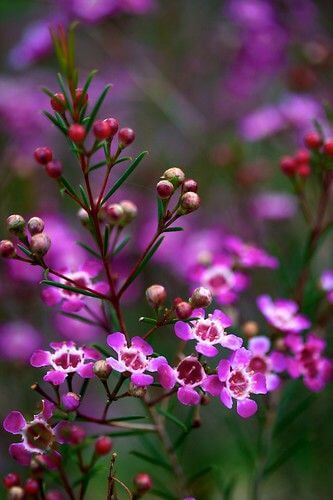
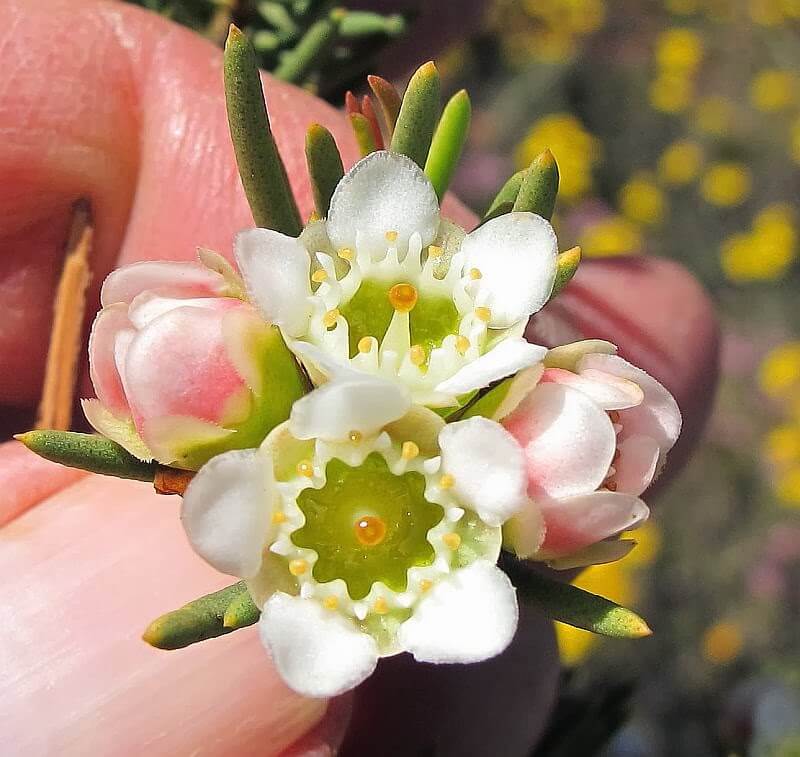
Growing Conditions and Care Tips
Wax flowers are charming shrubs that require specific soil conditions to thrive. To grow wax flower, the soil should be well-draining, slightly acidic with a pH level of 5.5 to 6.5. These plants need at least six hours of full sunlight a day to ensure healthy growth and abundant blooming. Regular watering and letting the soil dry before the next watering are essential for keeping your plants healthy and vibrant. This prevents root rot, which can damage or kill your plants. A balanced fertilizer during the growing season can also help your plants produce lush foliage and abundant flowers.
Optimal Soil, Sunlight, and Water Requirements for Wax Flowers
To ensure optimal health and to grow wax flower successfully, it’s important to provide them with well-draining soil with organic matter. To facilitate healthy root development, you can use either peat moss or compost. Both of them effectively work towards achieving this goal. Additionally, position the plant where it receives full sun exposure, as this encourages robust flowering and enhances overall plant vigor. Wax flowers need regular watering, but they don’t like too much water. The soil should be moist, not wet, to keep the roots from getting waterlogged. Furthermore, maintaining proper air circulation around the plants is essential to discourage fungal diseases and provide them with adequate humidity, promoting their well-being and vitality.
Pruning and Maintenance Techniques
To ensure the optimal health and appearance of your wax flower shrub, it’s important to engage in regular maintenance practices. Pruning dead or damaged stems at regular intervals promotes new growth and helps maintain an attractive shape for the shrub. Additionally, promptly removing spent flowers encourages continuous blooming throughout the growing season and prevents seed production. To keep the plants healthy, it is important to check them regularly for pests like aphids or spider mites. Quick treatment with mild insecticidal soap solutions is necessary for addressing any infestations. Furthermore, periodic light trimming is an effective method to control the size of the shrub while stimulating branching and promoting growth. Taking these steps will help you to grow wax flower shrubs in excellent condition.
Propagation Methods
Wax flowers offer various propagation methods, including seed propagation and cutting and division techniques. Propagating from seeds involves collecting mature seeds and sowing them in a well-draining potting mix. It’s essential to provide consistent moisture and warmth to support their germination and early growth. On the other hand, cutting and division methods require healthy stem cuttings rooted in a suitable growing medium, ensuring that the cuttings have at least two sets of leaves to promote successful root development. These propagation techniques provide gardening enthusiasts with options to successfully grow wax flower and cultivate new plants with ease.
Seed Propagation Process for Wax Flower
The seed propagation process for wax flowers starts with harvesting mature seed pods once they have dried on the plant. Once you have collected the seeds, you can plant them in a tray or pot filled with a well-draining mix of sand, perlite, and peat moss. Moreover, lightly covering the seeds with the potting mix and ensuring consistent moisture levels will support successful germination within a few weeks. Once the seedlings have produced a few sets of true leaves, you can transplant them into individual containers to provide ample space for their growth and help them thrive.
Cutting and Division Techniques for Propagating Wax Flower
When using cutting techniques to propagate wax flowers, it’s important to select healthy stems free of flower buds and make clean cuts just below a leaf node for optimal results. After removing the lower leaves, dipping the cut ends in rooting hormone will encourage robust root development before planting them in a moist rooting medium. On the other hand, division techniques involve carefully separating established clumps of wax flower plants into smaller sections, ensuring each division has its roots and shoots. Additionally, light, and frequent watering for newly propagated cuttings or divisions will support the establishment of strong root systems as they adapt to their new environment. These methods offer gardening enthusiasts effective ways to expand their wax flower collection and easily cultivate thriving new plants.
Dealing with Common Issues
To prevent common pests and diseases, regularly inspect your wax flowers for any signs of infestation or infection, ensuring their overall health and vitality. Proper air circulation around the plants reduces the risk of fungal diseases, keeping them in prime condition. If you notice yellow leaves or stunted growth, it could be because of overwatering. To fix the issue, adjust your watering schedule. Similarly, in case of wilting or drooping stems, evaluate the soil moisture levels and adjust watering practices accordingly to promote optimal growth and flourishing. These practices will help you maintain healthy and vibrant wax flowers in your garden.
Identifying and Addressing Common Pests and Diseases
When caring for your wax flowers, it’s essential to be vigilant for potential pests and diseases that may affect their health. To keep common pests such as aphids, scale insects, and spider mites at bay, it is essential to inspect the leaves regularly and identify them on the undersides. Additionally, keep an eye out for diseases like powdery mildew, botrytis, and root rot, and address these issues promptly to prevent further spread within the plant. If you notice any affected areas, prune them and remove severely damaged or diseased parts. To manage pest infestations while minimizing environmental impact, consider using organic pest control methods such as neem oil or insecticidal soap. These proactive measures will help ensure the overall well-being of your wax flower plants.
Troubleshooting Common Growth Problems
If the wax flowers are not growing as expected, it’s essential to assess their sunlight exposure and consider relocating them to a spot with better light conditions. Additionally, compacted soil around the roots can hinder proper growth, so gently loosening the soil will facilitate better nutrient absorption. Furthermore, ensuring adequate fertilization with a balanced formula is crucial to grow wax flower without promoting excessive foliage at the expense of flower production. Moreover, regular pruning is key to maintaining an open structure and encouraging robust flowering in wax flowers, promoting their overall health and vitality.
Creative Uses for Wax Flower
Wax flowers possess incredible versatility, enabling florists to incorporate them into various floral arrangements to elevate any occasion. Whether it’s a wedding, a special event, or a simple gathering, the delicate touch of wax flowers can truly transform the ambiance. Moreover, from bridal bouquets to wedding centerpieces, the vibrant colors and long-lasting nature of wax flowers make them an ideal choice. Additionally, they can be used to craft beautiful wreaths, garlands, and corsages, adding a unique texture and visual appeal to the overall aesthetic. Whether used alone or paired with other seasonal blooms, wax flowers bring a fresh and aromatic element to any floral arrangement, creating a romantic and elegant atmosphere.
Conclusion
In conclusion, mastering the art of how to grow Wax Flower is a rewarding endeavor for any gardening enthusiast. By following the essential steps outlined in this guide, you can cultivate thriving Wax Flower shrubs. And you can grace your garden with their vibrant colors and long-lasting blooms. With patience and care, you’ll see how they add a touch of elegance to your outdoor space or floral arrangements. Embracing the journey of growing Wax Flowers not only enhances your botanical skills but also brings joy and satisfaction as you nurture these charming plants from seed to bloom.
